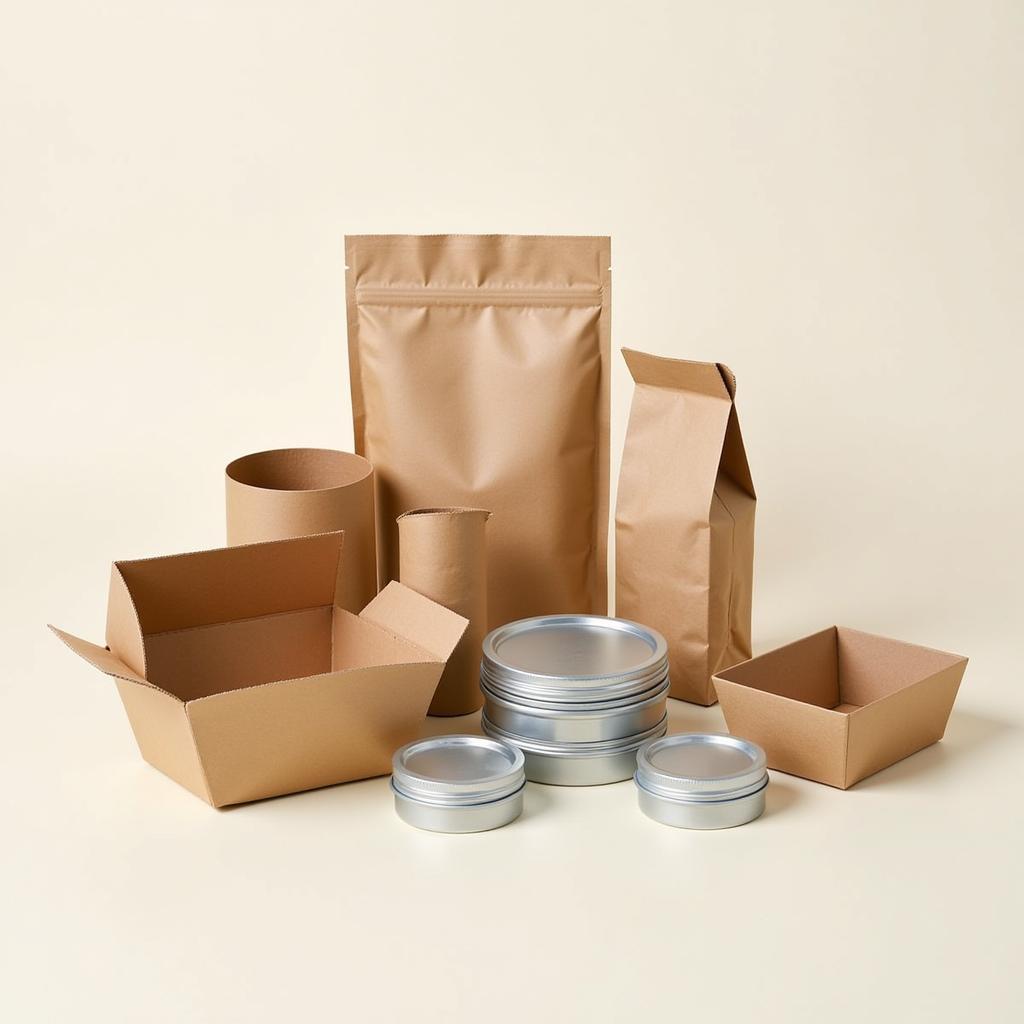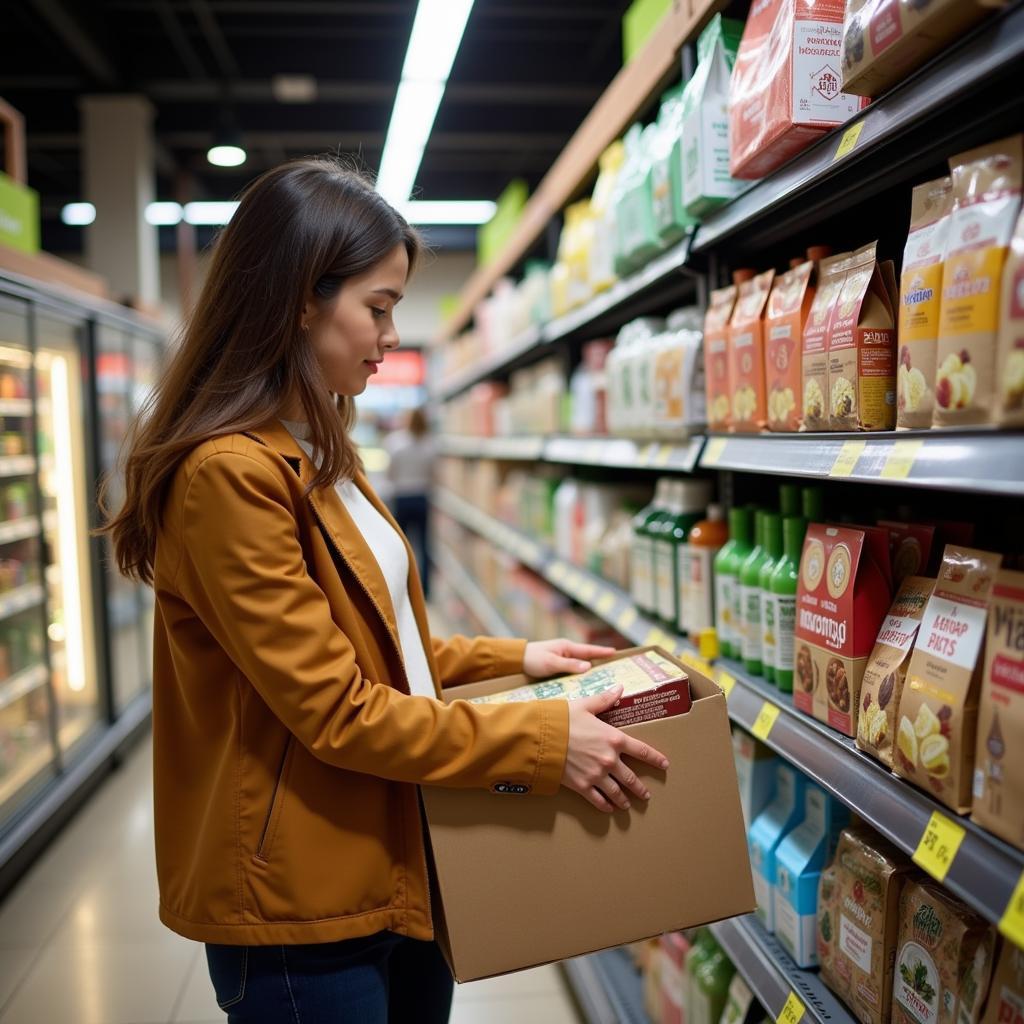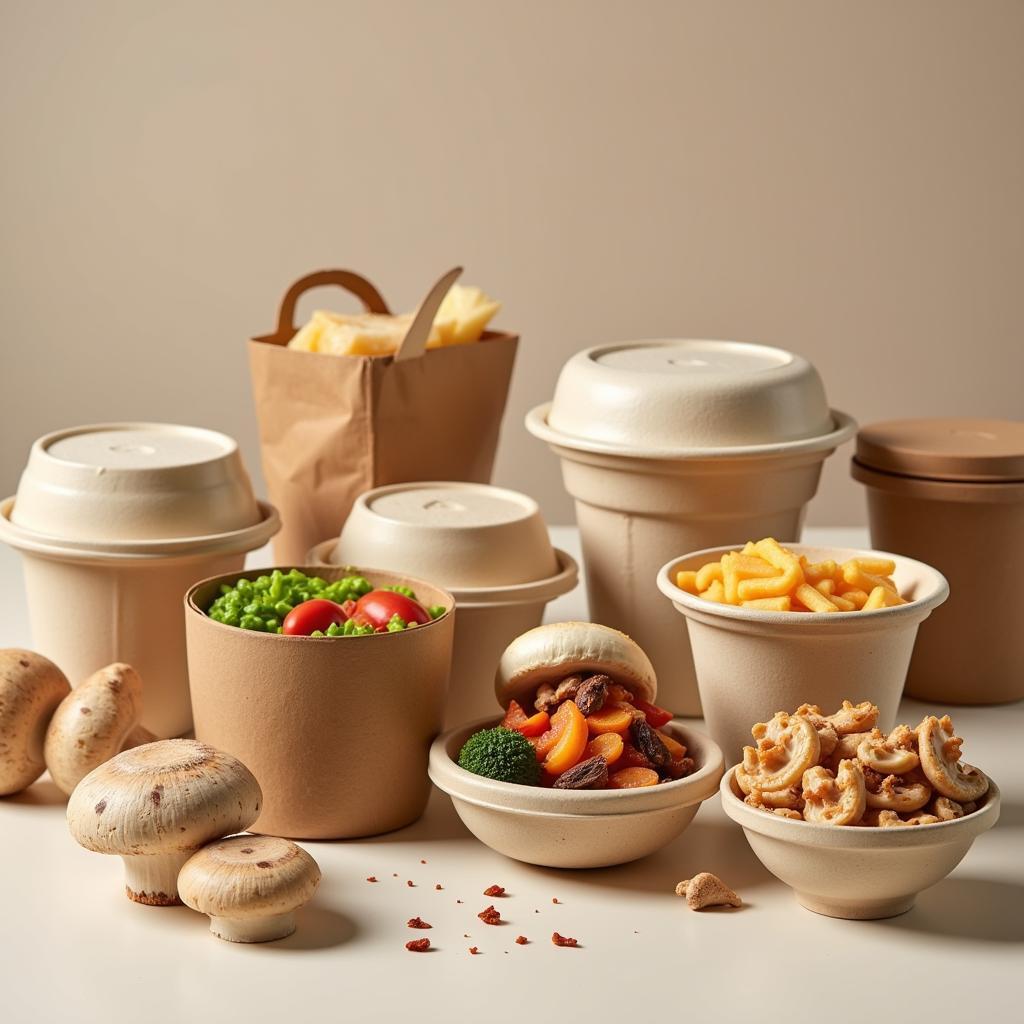The food industry is on a mission to become more sustainable, and Eco Food Packaging is leading the charge. From compostable containers to plant-based materials, there’s a world of innovative solutions popping up to reduce our environmental impact.
What Exactly is Eco Food Packaging?
Eco food packaging is all about minimizing our footprint on the planet. It’s about using materials and designs that are:
- Biodegradable and Compostable: Think materials that break down naturally into organic matter, like food paper sheets, reducing landfill waste.
- Recyclable: Choosing packaging that can be easily recycled into new products, thus conserving resources.
- Reusable: Opting for durable containers that can be washed and used multiple times, cutting down on single-use waste.
- Made from Renewable Resources: Utilizing materials like bamboo, sugarcane pulp, and mushroom packaging that regrow quickly, reducing reliance on fossil fuels.
 Eco-Friendly Food Packaging Options
Eco-Friendly Food Packaging Options
The Benefits of Embracing Eco Food Packaging
The advantages of eco food packaging go beyond environmental responsibility; they also offer a range of benefits for businesses and consumers alike:
- Reduced Environmental Impact: This one’s a given! By switching to eco-friendly options, we can significantly minimize pollution, conserve resources, and protect our planet for future generations.
- Enhanced Brand Image: In today’s world, consumers are increasingly drawn to businesses that prioritize sustainability. Using eco food packaging demonstrates a commitment to ethical and responsible practices, boosting your brand’s reputation.
- Potential Cost Savings: While some sustainable materials might have a higher upfront cost, they can lead to savings in the long run. Think reduced waste disposal fees and the potential for utilizing renewable resources.
- Meeting Consumer Demand: Consumers are increasingly seeking out eco-friendly options in all aspects of their lives, including food packaging.
 Customer Choosing Products with Eco-Friendly Packaging
Customer Choosing Products with Eco-Friendly Packaging
Popular Eco Food Packaging Materials
Let’s take a closer look at some of the most popular eco-friendly materials taking the food industry by storm:
- Plant-Based Plastics (PLA): Derived from renewable resources like corn starch or sugarcane, PLA is compostable and offers a fantastic alternative to traditional petroleum-based plastics.
- Bagasse: Made from sugarcane pulp, bagasse is a sturdy and compostable material often used for disposable food containers, plates, and bowls.
- Mushroom Packaging: Yes, you read that right! Mycelium, the root structure of mushrooms, can be grown into custom shapes and used as a sustainable alternative to Styrofoam.
- Seaweed-Based Packaging: Innovative companies are now using seaweed extracts to create biodegradable and edible films that can be used for wrapping food items.
Making the Switch: Tips for Businesses
Transitioning to eco food packaging doesn’t have to be overwhelming. Here are a few tips for a seamless switch:
- Assess Your Needs: Consider your specific packaging requirements, such as size, durability, and barrier properties.
- Research Suppliers: Explore different manufacturers and suppliers specializing in eco-friendly packaging solutions.
- Start Small: Begin by incorporating one or two sustainable options into your packaging lineup, gradually expanding your efforts over time.
- Educate Your Customers: Communicate the benefits of your eco-friendly packaging choices to your customers, inspiring them to join you on your sustainability journey.
“Switching to eco food packaging was one of the best decisions we made,” says Sarah Jones, owner of a successful organic bakery. “Our customers love it, and it aligns perfectly with our brand values.”
 Various Eco-Friendly Food Packaging Materials
Various Eco-Friendly Food Packaging Materials
Eco Food Packaging: A Step Towards a Greener Future
As we become increasingly aware of our environmental impact, the shift toward eco food packaging is no longer a trend but a necessity. By embracing sustainable practices, we can all contribute to a healthier planet for ourselves and generations to come.
Looking for ways to keep your food fresh while on the go? Consider using thermal bags for food delivery to maintain optimal temperatures and reduce the need for single-use packaging.
FAQ
1. Is eco food packaging more expensive?
While some eco-friendly materials might have a slightly higher upfront cost, they can lead to long-term savings through reduced waste disposal fees and the potential for utilizing renewable resources.
2. What are the most common applications for eco food packaging?
Eco food packaging is used for a wide range of applications, including takeaway containers, food wraps, beverage cups, and product packaging for dry goods.
3. How can I tell if packaging is genuinely eco-friendly?
Look for certifications and labels from reputable organizations that verify the sustainability of packaging materials.
4. Can eco food packaging keep food fresh?
Yes, many eco food packaging options offer excellent barrier properties that help to preserve the freshness and quality of food.
5. How can I dispose of eco food packaging properly?
Disposal methods vary depending on the material. Check the packaging for specific instructions, such as composting, recycling, or disposal in regular waste.
Need more information about eco-friendly food options or interesting non-food birthday treats for school? Explore our website for more helpful articles.
If you’re looking to add vibrant colors to your culinary creations while maintaining an eco-conscious approach, explore our range of powder food dye.
Contact us at Phone Number: 02437655121, Email: minacones@gmail.com or visit us at 3PGH+8R9, ĐT70A, thôn Trung, Bắc Từ Liêm, Hà Nội, Việt Nam. Our dedicated customer support team is available 24/7 to assist you.